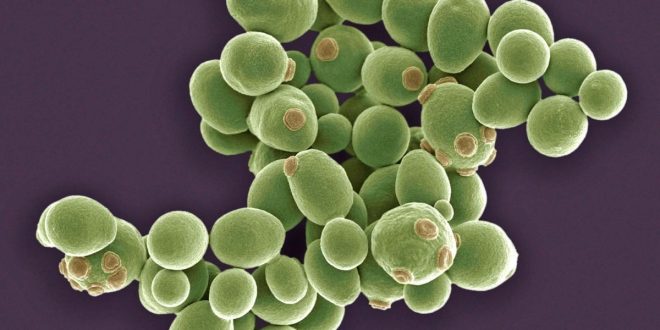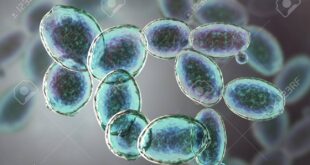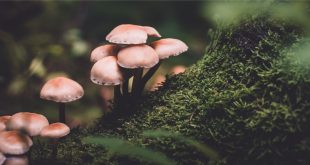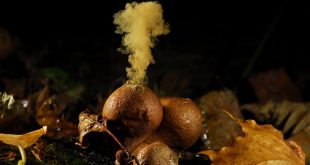Endomycetales is an order of ascomycetous fungi having ascus (pl. asci) developing from a zygote or single cell. One of the families of Endomycetales is Saccharomycetaceae and the members of this family are commonly known as Yeasts.
| Systematic Position | ||
| Phylum | Ascomycota | |
| Class | Ascomycetes | |
| Order | Endomycetales | Ascus (pl. asci) developing from a zygote or single cell |
| Family | Saccharomycetaceae | Commonly known as Yeasts. They are budding creatures. |
| Genus | Saccharomyces, Candida, Pichia etc. | |
| Species | Best known: Saccharomyces cerevisiae | |
Yeast
Yeast is a unicellular ascomycete that reproduces by budding or fission. Now a days, the term Yeast has no taxonomic standing and simply denotes a growth form. Interestingly, some other groups of fungi are known for the presence of yeast stages in their life cycles, while others are characterized by their absence.
Some zygomycetes, ascomycetes and basidiomycetes may be dimorphic and shift from mycelial growth to yeast-like growth under certain environmental conditions.
So, to distinguish, the members of Saccharomycetaceae are called ‘True Yeast’ or simply ‘Yeast’.
Characteristics of Saccharomycetaceae
Thallus
- Most important character is that the members of Saccharomycetaceae lack ascogenous hyphae and ascocarps. They have a predominantly unicellular thallus that may produce pseudomycelium.
- There is no dikaryotic phase in their life cycle, as karyogamy occurs immediately after plasmogamy.
Asexual Reproduction
- They reproduce asexually primarily by budding.
Sexual Reproduction (See the life cycle below)
- The zygote is either derived by copulation of two cells or by parthenogenesis.
- The zygote either directly becomes ascus or form an erect, septate ascophore from which asci develop.
- The asci are generally thin walled.
Occurrence and distribution
Species of Saccharomycetaceae inhabit sugary plant exudates such as slimy wound, flower nectar substrate, spoilage of fishes, fruits and soil, digestive parts of mammals and dung.
Importance
- Spoilage of fishes and fruits food.
- As plant pathogens.
- Contamination of seeds in storage.
- Human pathogen.
- Used as supplements to food in the manufacture of riboflavin and citric acid.
Yeast supplements were used during Second World War in Germany.
Life cycle of yeast
Two types of life cycles are present.
- Haplobiontic life cycle.
- Diplobiontic life cycle.
Life cycle of Saccharomyces cerevisiae
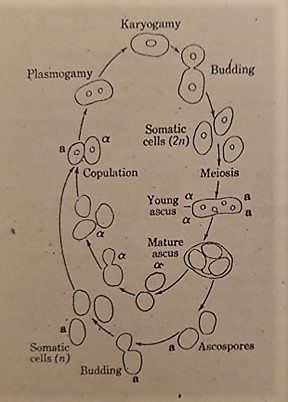
S. cerevisiae is an example of a species that may have both haploid and diploid budding stages. It is heterothallic, with two different types of ascospores. Among 4 ascospores produced, two are of one mating type (named a) and two of different mating types (named α).
The ascospores upon release from the asci produce buds and thus increase their number. After a while, two types of ascospores copulate with each other and produce a zygote following plasmogamy first and karyogamy later.
The zygote then begins to buds and several generations of diploid cells ensue before the ascospore formation commences.
Thus the cycle continues.
 Plantlet The Blogging Platform of Department of Botany, University of Dhaka
Plantlet The Blogging Platform of Department of Botany, University of Dhaka
